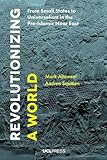Revolutionizing a world From Small States to Universalism in the Pre-Islamic Near East
Material type: ArticleLanguage: English Publication details: UCL Press 2018Description: 1 electronic resource (336 p.)ISBN:
ArticleLanguage: English Publication details: UCL Press 2018Description: 1 electronic resource (336 p.)ISBN: - 9781911576631
- 9781911576631
| Item type | Current library | Collection | Shelving location | Call number | Status | Notes | Date due | Barcode |
|---|---|---|---|---|---|---|---|---|
| Electronic edition | Bucheon University Library | History / Biographies of prominent people | OAPEN | 94 R48 | Not for loan | Смотреть (pdf) | 1009554 |
Open Access star Unrestricted online access
This book investigates the long-term continuity of large-scale states and empires, and its effect on the Near East’s social fabric, including the fundamental changes that occurred to major social institutions. Its geographical coverage spans, from east to west, modern-day Libya and Egypt to Central Asia, and from north to south, Anatolia to southern Arabia, incorporating modern-day Oman and Yemen. Its temporal coverage spans from the late eighth century BCE to the seventh century CE during the rise of Islam and collapse of the Sasanian Empire. The authors argue that the persistence of large states and empires starting in the eighth/seventh centuries BCE, which continued for many centuries, led to new socio-political structures and institutions emerging in the Near East. The primary processes that enabled this emergence were large-scale and long-distance movements, or population migrations. These patterns of social developments are analysed under different aspects: settlement patterns, urban structure, material culture, trade, governance, language spread and religion, all pointing at movement as the main catalyst for social change. This book’s argument is framed within a larger theoretical framework termed as ‘universalism’, a theory that explains many of the social transformations that happened to societies in the Near East, starting from the Neo-Assyrian period and continuing for centuries. Among other influences, the effects of these transformations are today manifested in modern languages, concepts of government, universal religions and monetized and globalized economies.
Creative Commons https://creativecommons.org/licenses/by/4.0/ cc
English




There are no comments on this title.